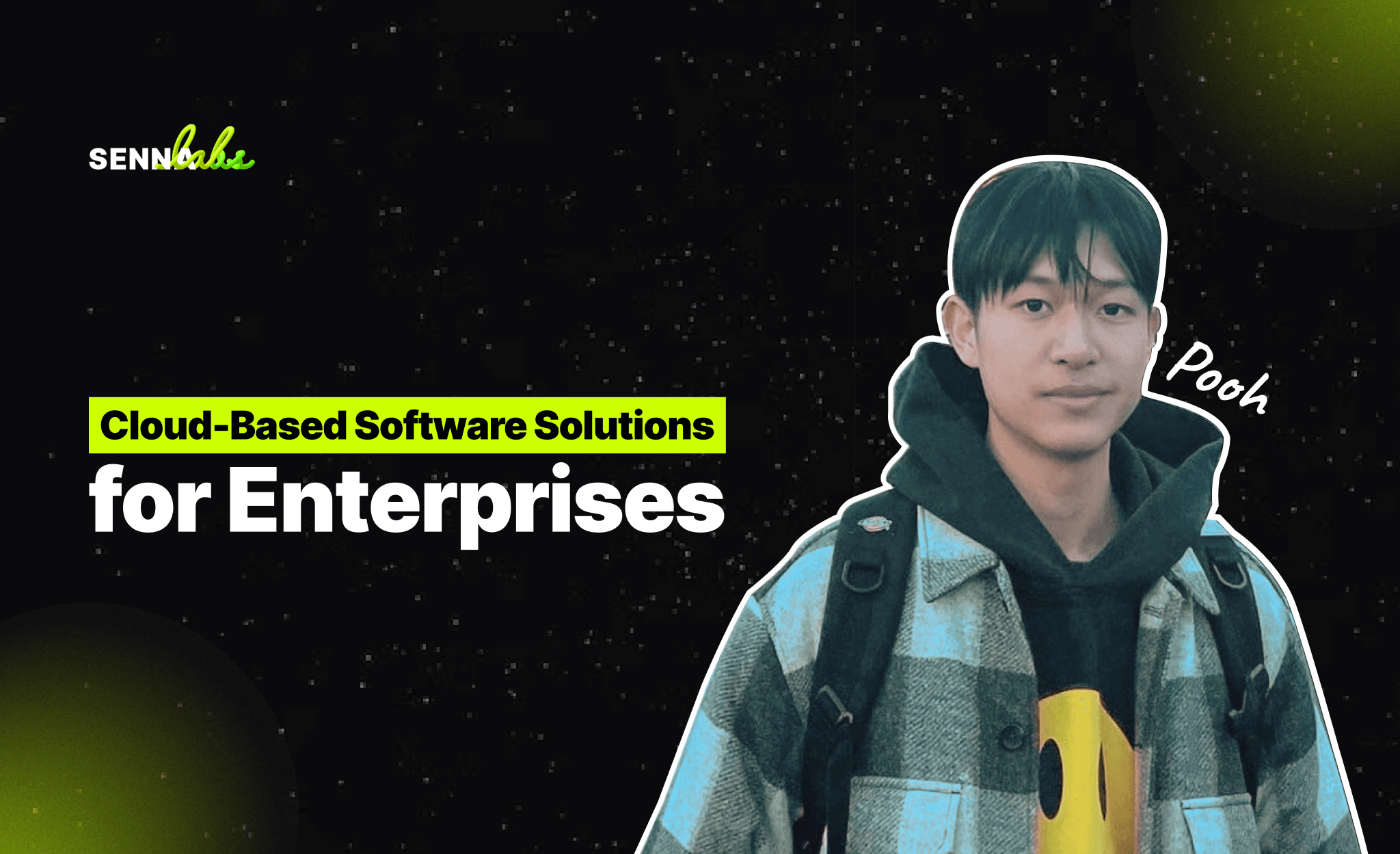Cloud-Based Software Solutions for Enterprises
Share

In today's rapidly evolving digital landscape, enterprises are increasingly turning to cloud-based software solutions to modernize their operations and improve efficiency. The migration of legacy systems to cloud platforms has become a critical strategy for businesses aiming to enhance scalability, reduce operational costs, and improve data accessibility. This article explores the significance of cloud migration, key benefits, challenges, and best practices for enterprises transitioning from legacy systems to cloud-based solutions.

The Growing Need for Cloud Migration in Enterprises
Enterprises across various industries rely on legacy systems that have been in operation for years, if not decades. These systems, while foundational to business operations, often pose significant limitations, including:
-
High maintenance costs due to outdated infrastructure and software.
-
Limited scalability, making it difficult for businesses to expand or handle increased workloads.
-
Security vulnerabilities that arise from obsolete technologies and lack of updates.
-
Incompatibility with modern applications, hindering seamless integration with newer digital solutions.
To overcome these challenges, enterprises are increasingly adopting cloud-based software solutions that offer enhanced operational flexibility, cost-effectiveness, and improved security.
Key Benefits of Migrating Legacy Systems to the Cloud
1. Enhanced Scalability and Flexibility
Cloud computing provides enterprises with the ability to scale their IT resources dynamically based on demand. Unlike traditional legacy systems that require significant investments in hardware and software upgrades, cloud platforms offer on-demand scalability, allowing businesses to adjust their storage, processing power, and applications as needed.
2. Cost Optimization
One of the most compelling reasons for cloud migration is the potential cost savings. Maintaining legacy systems requires substantial investment in hardware, software licenses, maintenance, and personnel. Cloud platforms operate on a pay-as-you-go model, where enterprises pay only for the resources they use. This eliminates unnecessary expenses and significantly reduces capital expenditure.
3. Improved Accessibility and Collaboration
Cloud-based solutions enable remote access to enterprise applications and data, facilitating better collaboration among teams, regardless of their physical location. This is particularly beneficial for businesses with global operations, as employees can access critical information securely from anywhere.
4. Enhanced Security and Compliance
Legacy systems often lack modern security features, making them vulnerable to cyber threats. Cloud providers offer advanced security measures, including encryption, multi-factor authentication, automated threat detection, and compliance certifications that ensure businesses meet industry regulations.
5. Faster Time-to-Market
Cloud migration accelerates the deployment of new applications and services by eliminating delays caused by hardware procurement and infrastructure setup. Enterprises can leverage cloud-native development tools to build and deploy solutions more efficiently.
6. Seamless Integration with Modern Technologies
Migrating to the cloud enables businesses to integrate AI, machine learning, big data analytics, and IoT into their operations. These technologies help enterprises gain valuable insights, automate processes, and improve decision-making.
Challenges of Migrating Legacy Systems to the Cloud
Despite its numerous advantages, cloud migration presents challenges that enterprises must address to ensure a smooth transition.
1. Complexity of Migration
Legacy systems are often deeply embedded in business operations, making migration complex. Identifying dependencies, rewriting applications, and ensuring minimal disruption require careful planning.
2. Downtime and Business Disruptions
Transitioning to a cloud platform may lead to temporary downtime, affecting business continuity. Enterprises must implement strategies to minimize disruptions and ensure critical services remain operational.
3. Data Security and Privacy Concerns
Transferring large volumes of sensitive business data to the cloud raises security concerns. Organizations must comply with data privacy regulations and implement robust security measures to protect sensitive information.
4. Skill Gaps and Training Requirements
Cloud migration often requires new skill sets that traditional IT teams may lack. Enterprises must invest in employee training and upskilling programs to maximize the benefits of cloud solutions.
5. Vendor Lock-In
Choosing a cloud provider can create dependency on proprietary technologies, making it challenging to switch providers in the future. Enterprises should consider multi-cloud or hybrid cloud strategies to reduce vendor lock-in risks.
Best Practices for a Successful Cloud Migration
1. Assess Legacy Systems and Define a Cloud Strategy
Before initiating migration, enterprises must evaluate their existing IT infrastructure, identify pain points, and define clear objectives. This includes determining which applications to migrate, retire, or modernize.
2. Choose the Right Cloud Model
Enterprises must select an appropriate cloud deployment model based on their specific needs:
-
Public Cloud (e.g., AWS, Google Cloud, Microsoft Azure) for cost-effective, scalable solutions.
-
Private Cloud for businesses requiring greater control and security.
-
Hybrid Cloud for organizations seeking flexibility between on-premise and cloud environments.
3. Select the Right Cloud Migration Approach
There are several migration strategies, including:
-
Lift and Shift (Rehosting): Moving applications to the cloud with minimal modifications.
-
Refactoring (Rearchitecting): Redesigning applications to take full advantage of cloud capabilities.
-
Replatforming: Making minor modifications to optimize applications for cloud environments.
4. Ensure Robust Security Measures
Security must be a top priority during cloud migration. Enterprises should:
-
Encrypt data during transit and at rest.
-
Implement access controls and multi-factor authentication.
-
Regularly conduct security audits and vulnerability assessments.
5. Test and Optimize Cloud Applications
Post-migration, businesses should conduct thorough testing to ensure performance, security, and functionality meet expectations. Continuous monitoring and optimization help maximize efficiency and cost savings.
6. Train Employees and Foster a Cloud-First Culture
Successful cloud adoption requires a shift in mindset. Organizations should provide training programs to help employees understand and leverage cloud technologies effectively.
7. Leverage Managed Cloud Services
For enterprises with limited in-house expertise, partnering with a managed cloud services provider can simplify migration, reduce risks, and ensure smooth operations.
Future Trends in Cloud-Based Software for Enterprises
As cloud adoption continues to grow, emerging trends are shaping the future of cloud-based software solutions:
1. Edge Computing and Hybrid Cloud Adoption
Businesses are increasingly leveraging edge computing to process data closer to the source, reducing latency and improving real-time decision-making. Hybrid cloud adoption is also rising, allowing enterprises to balance on-premise control with cloud scalability.
2. AI and Machine Learning Integration
Cloud providers are integrating AI and machine learning capabilities to automate processes, enhance cybersecurity, and improve business intelligence.
3. Serverless Computing
Serverless architectures enable enterprises to build applications without managing infrastructure, reducing operational complexity and costs.
4. Increased Focus on Sustainability
Cloud providers are investing in green computing initiatives to reduce carbon footprints and promote sustainable IT practices.
Conclusion
Migrating legacy systems to cloud-based platforms is no longer just an option; it is a necessity for enterprises seeking to stay competitive in a digital-first world. While challenges exist, the benefits far outweigh the risks when businesses adopt a strategic, well-planned approach to cloud migration.
By embracing scalability, cost efficiency, enhanced security, and seamless integration with modern technologies, enterprises can unlock new opportunities for growth and innovation. Organizations that invest in cloud-based solutions today will be better positioned to drive business agility and success in the future.
For enterprises considering cloud migration, the key takeaway is clear: the cloud is not just a technology shift—it is a business transformation.

Share

Keep me postedto follow product news, latest in technology, solutions, and updates
Related articles
Explore all


